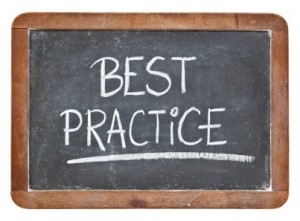 For the past few transitions to the new year, I’ve reposted my “A Leader’s Resolutions are Calendar Blind” article, suggesting that we need a bit more frequent refresh than this annual once per year, open-season on resolution resets. While I stand behind the suggestions in the post, my thinking has evolved a bit during this past year.
For the past few transitions to the new year, I’ve reposted my “A Leader’s Resolutions are Calendar Blind” article, suggesting that we need a bit more frequent refresh than this annual once per year, open-season on resolution resets. While I stand behind the suggestions in the post, my thinking has evolved a bit during this past year.
In my opinion, a daily refresh isn’t too frequent—and in this world of complexity and change, it might not be enough.
A bit of background is in order.
I had the great fortune thanks to a client engagement to dig in to the very important topic of leading and leadership in dangerous situations. Sadly, this century has thus far been marked by global turmoil, war and violence, and as a result, we’ve developed a body of research on the challenges, issues and practices that work (and don’t work) in dangerous settings.
- General Stanley McChrystal and his team have suggested an entire new approach to managing and teaming in his excellent book, Team of Teams.
- A 2011 publication, “Leadership in Dangerous Situations,” offers some outstanding research-backed guidance on the practices and approaches that work in both modern combat and first-responder situations.
At least one of the core themes in all of these works is the need for the leader to internalize and constantly execute on his/her role in distinct ways because of (not in spite of) the volatility, uncertainty, complexity and ambiguity (VUCA) in these situations.
In the business world, two important works suggest the need for new approaches to leading:
- The Attacker’s Advantage by Ram Charan suggests combatting VUCA by going on the offensive and striving to see and seize opportunities in all of the noise.
- No Ordinary Disruption by Dobbs and Manyika (and the McKinsey Team) offers up a view to the unparalleled and profoundly powerful macro forces impacting the global economy and business environment. Surviving and thriving in this environment surely demands new approaches to leading and managing.
What’s a Leader to Do?
The behaviors that everyone of us can list chapter and verse that reflect our traditional view of effective leadership still hold, but they’re not enough.
There’s a new dimension in business—the need for speed around innovation, problem-solving, opportunity development and execution, coupled with the need to promote safety and security in what is ostensibly an unsafe and insecure environment. These factors suggest that today’s successful leaders cultivate a stronger sense of purpose and role and work tirelessly to reinforce this role. I referenced this in earlier posts this year as, the “Inner Game of Leading”.
How does this relate to your new year’s resolutions to be a better leader, you ask?
Here are my suggestions for supporting your growth, development and daily effectiveness in the new year.
4 Big Ideas to Renew Your Leadership Effectiveness Daily:
1. Rethink your role. Today’s leader must offer “burden relief” to his/her team members. Take the environmental problems away and do everything possible every day to allow your team members to apply their creativity and talents to their core work. Uncomplicate things for them!
2. Decomplexify. (Yes. I’m minting words in this post.) Ambiguity in our markets is the order of the day. You need to actively strive to take the complexity out of the situation and allow your team members to focus on taking bite-sized chunks out of the elephantine level of challenges in front of them.
3. Practice “adjusting your own attitude” every morning before work. Take a few minutes in the parking lot at the coffee shop or at your desk before the craziness starts and focus on what you can do to best support your team members. It’s likely not about barking orders or running an endless series of status update meetings. If you are spiritual, consider incorporating or adapting your own variation of the Jesuit practice of The Daily Examen.
4. Learn to care about your team members. Show it and mean it! Beyond displaying competence, the notion that the leader “cared” for team members and their safety and security is consistently listed as the most critical credibility builder for leaders in dangerous situations. While most of us aren’t facing the daily hostilities of our treasured men and women in the armed forces, we are dealing with people who will respond positively to a leader who cares about them, their careers and the security of their jobs and families.
The Bottom-Line for Now:
Great leadership practices are timeless, but the context has shifted. It’s different for all of us today. There’s an underlying feeling of anxiety and stress in a world where “change is changing” seemingly at an accelerating pace and where economic turmoil and the miserable specter of violence in our society are never far away, whether we’re in Paris or on the streets of Chicago. You and I must learn to be better at our jobs every single day!
May your resolutions and your resolve to improve be ever-green!
—
Art Petty serves senior executives and management teams as a performance coach and strategy facilitator. Art is a popular keynote speaker focusing on helping professionals and organizations learn to survive and thrive in an era of change. Additionally, Art’s books are widely used in leadership development programs. To learn more or discuss a challenge, contact Art.
- Invite Leadership Caffeine to Your Next Meeting! Invite Art to speak.
- Subscribe to the Leadership Caffeine Newsletter with subscriber only content. Register here






Leave A Comment